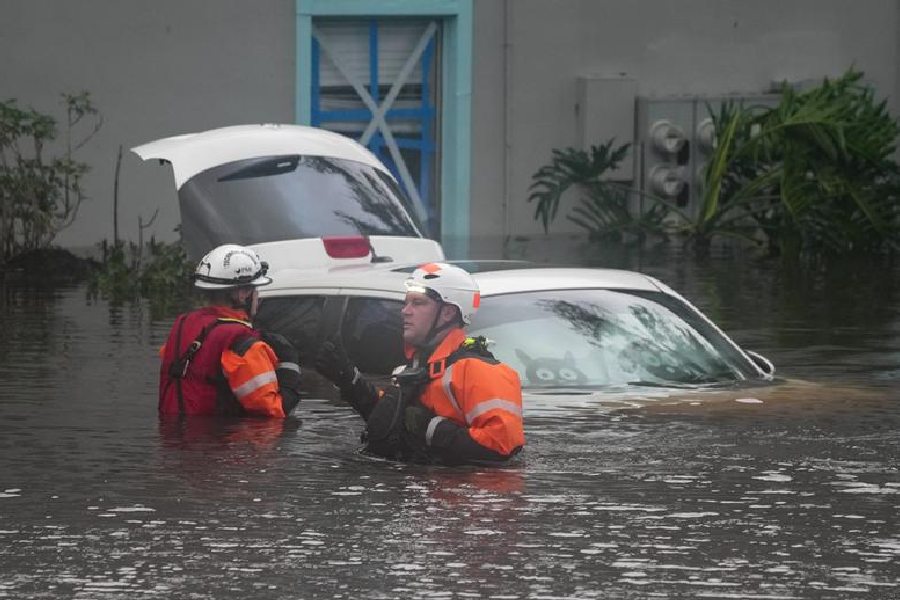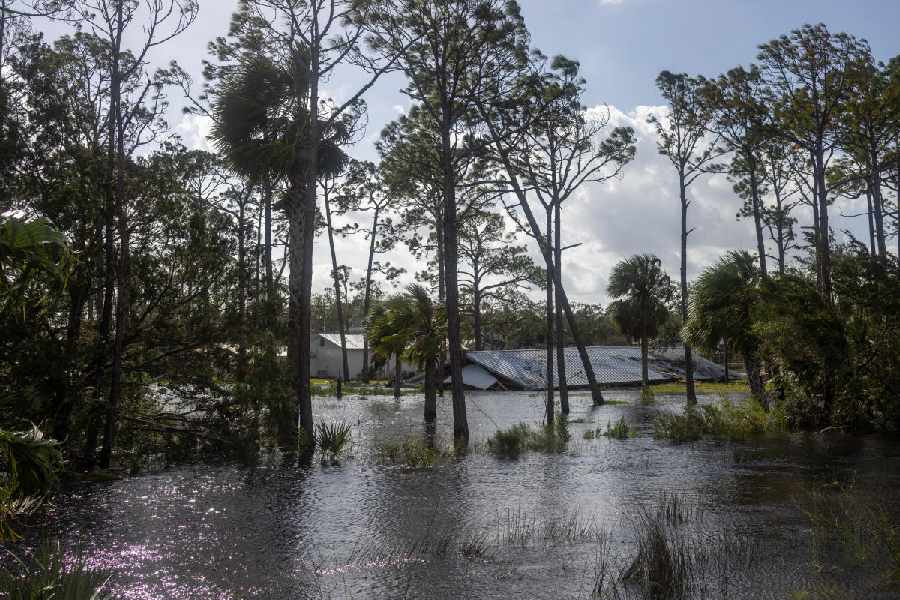Tropical storm seasons appear to be worsening, with two major hurricanes hammering the US state of Florida within the space of a month, including one described by President Joe Biden as the "storm of the century."Hurricane Milton hit Florida as a Category 3 storm at 8:30 p.m. local time on October 9, with maximum winds recorded at 85 miles per hour (about 136 kilometers per hour) as it moved inland. Milton also whipped up at least 12 deadly tornadoes, destroyed homes and knocked out power for some 3 million people.
The Tampa area in Florida remained a major emergency, with some areas flooded by more than 16 inches (40.6 centimeters) of rain. The US National Weather Service issued flash flood warnings for that area and other parts of western and central Florida.
Just weeks earlier, Florida, Georgia, North and South Carolina were ravaged by Hurricane Helene.
Over the Atlantic, when Hurricane Beryl struck Jamaica in May 2024, it was described as an "explosive start" to the year's storm season, which officially runs from June 1 to November 30 in the Atlantic and Eastern Pacific.
While these major weather hazards are part of life throughout the world's tropics, they require a complex mix of ingredients to spin into being. Scientists also warn that climate change will make these events worse.
Hurricane: What's in a name?
Many different regional terms are used to describe the same extreme weather event: the tropical cyclone.
This weather phenomenon is referred to as a typhoon off East and Southeast Asia, a cyclone off India and Australia and a hurricane in North America.
Tornadoes are the land equivalent of these water-based cyclones. Unlike hurricanes, tornadoes can develop wherever there are thunderstorms.
Local temperature differences cause warm air to push upward, cold air to plummet and a column of warm air to spiral upward faster and faster. Tornadoes can have a diameter of up to a mile (1.6 kilometers), but are usually much smaller.
Hurricanes are high-maintenance
Regardless of what you call them, these storms form in a similar way, when water warmer than 26 degrees Celsius (79 Fahrenheit) evaporates over the sea.
"Hurricanes need a number of basic conditions to be able to form," said Andreas Friedrich, meteorologist and tornado officer at the German Weather Service.
Along with the sea-surface temperature requirement of at least 26 Celsius, this warm-water area must be large enough for a hurricane to form — several hundred square kilometers. And hurricanes can't develop without the presence of a low-pressure area.
"Often, small low-pressure areas move from the West coast of Africa with the monsoon current across the Atlantic into these warm waters," said Friedrich.
A hurricane can only form, he added, when there are no large wind differences near the surface of the sea or at higher altitudes. These would drive the storm apart.
Destructive mixture
If everything comes together, a low-pressure area can develop into a hurricane.
Warm, humid air from the sea rises to condense at colder altitudes, forming thunderclouds and negative pressure on the sea's surface. Massive volumes of air are drawn into the storm from the surrounding area.
Then, these air masses are pulled upwards like in a chimney, generating wind speeds of up to 350 kilometers per hour (218 miles per hour).
The Coriolis force, which is related to Earth's spin, sets the masses in rotation.
"In the center of this vortex, the typical 'eye' of a hurricane is formed, where it is completely calm and cloudless, while the clouds at the edge of the eye pile up higher and higher," said Friedrich.
Slow-moving storms are more devastating
The longer these favorable hurricane conditions persist, the more destructive the storm becomes.
"Hurricanes move with the help of air currents at an altitude of 5 to 8 kilometers. They determine where the hurricane moves," said Friedrich.
When the hurricane hits a coast, it usually loses power quickly. The air currents in the higher atmosphere quickly drive the storm inland, cutting it off from its main source of energy — warm, moist ocean air. There, they weaken into low-pressure systems, losing their destructive power.
However, if a tropical cyclone moves very slowly and continues being fed with moist ocean air near the coast, it can cause severe damage.
Stronger tropical storms due to climate change
Climate change may not make hurricanes and cyclones occur more frequently, but extreme weather researchers say they are becoming stronger because of it.
Tropical cyclones gain most of their energy from the evaporative heat of the water vapor they pick up over the ocean.
With ocean surface temperatures rising, hurricanes are absorbing greater volumes of water vapor faster, according to a 2023 analysis of North Atlantic tropical cyclones published in the journal Scientific Reports.
Along with increasing the intensity of hurricanes, the trend is making it harder for meteorologists to reliably predict when and where hurricanes will strike.
Ocean warming brews hurricanes within 24 hours
"The larger the ocean areas with temperatures above 26 degrees, the larger the areas where hurricanes can form," said Friedrich.
The Scientific Reports analysis appeared to support this: It suggested hurricanes today were more than twice as likely to develop from a weak (Category 1) hurricane to a strong (Category 3 or more) hurricane within 24 hours.
In addition, the regions where tropical cyclones occur in the Atlantic and Caribbean have also shifted in response to the warming of the ocean during the study period.











